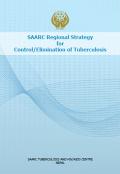Publications - Released in 2012
Tuberculosis (TB) is one of the major public health problems in SAARC Region. Out of the 22 high TB disease burden countries (HBC) in the world, four countries (Afghanistan, Bangladesh, India and Pakistan) are in the SAARC Region. There are estimated 4.54 million prevalent cases, and 3.07 million new cases in the Region.
SAARC Tuberculosis and HIV/AIDS Centre (STAC), Kathmandu, Nepal, a Regional Centre of SAARC, was established for prevention and control of TB through coordination of National TB Control Programs (NTPs) in the Member States.
In line with STOP TB Partnership Strategy, STAC has developed SAARC Regional Strategy for Control/Elimination of TB for achieving MDG of reducing disease burden of TB to half by 2015, and finally its elimination by 2050. The strategy will be implemented for a period of Five years, 2013-2017. The SAARC Regional Strategy is developed with the joint efforts and inputs of all the SAARC Member States to address the challenges and issues in the context of the region and member countries.
Downloads
Organizations
- South Asian Association for Regional Cooperation (SAARC)






